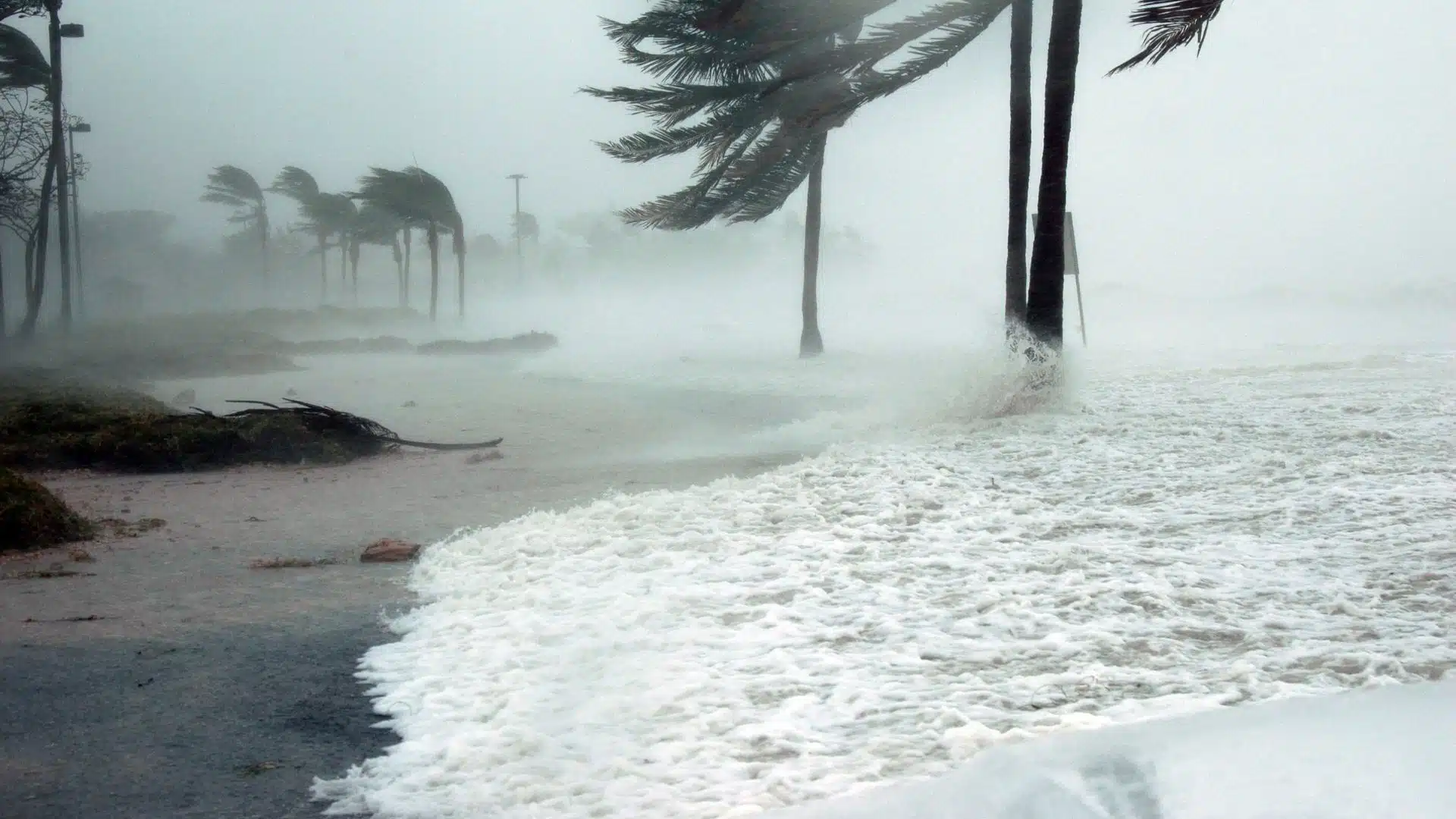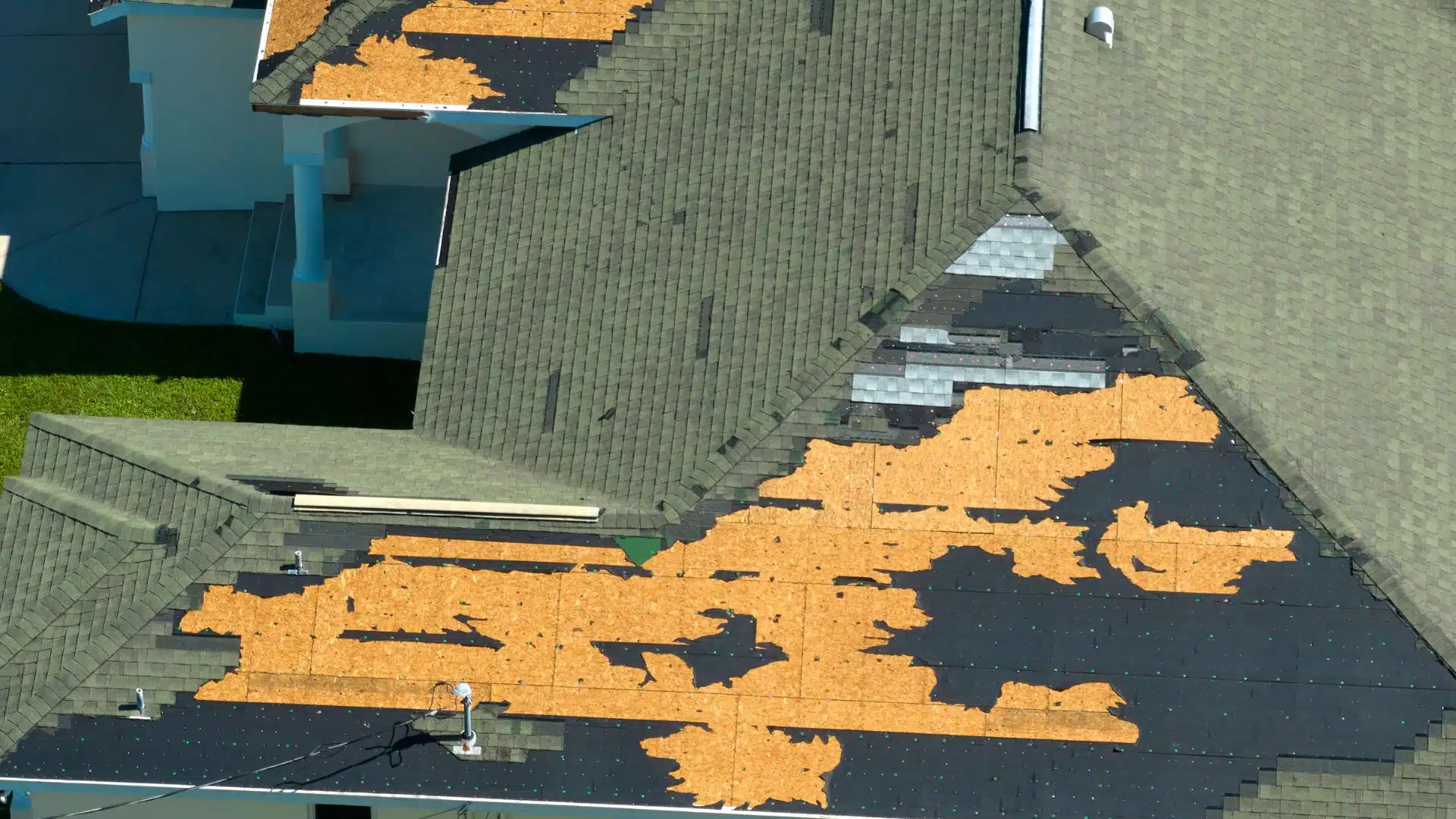Hurricane-Resistant Roofing Materials
Homeowners living on the Mississippi Gulf Coast should consider hurricane-resistant roofing materials as a crucial aspect of their hurricane preparedness strategy. A fortified roofing system offers numerous advantages that enhance a home’s resilience against extreme weather conditions.
Characteristics of Fortified Roofing
FORTIFIED roofing is designed following a specific set of construction standards created by the Insurance Institute for Business & Home Safety (IBHS). This approach aims to improve a home’s ability to withstand hurricanes and severe weather conditions. Some key characteristics of fortified roofing include:
- Impact-Resistant Materials: FORTIFIED roofs use impact-resistant shingles that endure falling debris, hail, and other severe weather conditions without compromising the roof’s integrity.
- Enhanced Attachment: The use of ring-shank nails improves the attachment of the roof deck, reducing the likelihood of blow-offs during high winds (A. Fricker Roofing).
- Increased Durability: FORTIFIED roofs are designed to outlast conventional roofs even under harsh weather conditions, offering long-term durability and reduced repair costs.
| Characteristic | Description |
| Impact Resistance | Shingles resist damage from debris and hail |
| Strong Attachment | Ring-shank nails enhance secure roof deck attachment |
| Long-Term Durability | Lasts longer than conventional roofing materials |
Importance of Wind Uplift Resistance
Wind uplift resistance is a critical factor for homeowners to consider when selecting roofing materials in hurricane-prone regions. This characteristic refers to a roof’s ability to withstand wind forces that can lift the roofing materials off the structure. FORTIFIED roofing systems are specifically designed to maximize wind uplift resistance, ensuring that homeowners remain protected during severe storms.
The integration of strong attachment methods and impact-resistant materials provides a significant advantage in preventing roof damage. Homeowners can enjoy peace of mind knowing that a fortified roof offers robust protection against wind uplift and flying materials during hurricanes.
By investing in hurricane-resistant roofing materials, homeowners not only enhance the safety and durability of their homes but may also benefit financially through reduced insurance premiums due to decreased risk of damage. For those considering options, refer to our articles on hurricane-proof roofing solutions and fortified roof installation tips for further guidance on making informed decisions related to roofing needs.
Metal Roofing Options
Metal roofing is among the most durable roofing materials available, notable for its ability to withstand high winds and flying debris. This makes it an excellent choice for homeowners in hurricane-prone areas like the MS Gulf Coast. This section explores various types of metal roofing suitable for hurricane-resistant construction.
Galvanized Steel Metal Roofing
Galvanized steel roofing is a highly resilient option for homeowners looking to fortify their roofs against hurricanes. Coated with zinc, this type of metal roofing provides additional protection against rust and corrosion, ensuring longevity even in harsh weather conditions.
| Feature | Description |
| Wind Resistance | Can withstand wind speeds up to 160 mph |
| Durability | High resistance to impact and corrosion |
| Fire Resistance | Fire-resistant properties |
| Warranty | Varies by manufacturer |
This type of roofing is especially recommended for regions that experience frequent storms. Not only does it provide excellent protection, but it also requires minimal maintenance compared to traditional roofing materials. For installation guidance, refer to our article on fortified roof installation tips.
Aluminum Metal Roofing
Aluminum is another robust choice for metal roofing, particularly due to its lightweight and corrosion-resistant properties. It performs exceptionally well in coastal climates, where salt will otherwise damage traditional roofing materials.
| Feature | Description |
| Wind Resistance | Withstands high wind speeds similar to galvanized steel |
| Lightweight | Easier to handle during installation |
| Corrosion Resistance | Ideal for coastal areas |
| Variety of Styles | Available in several colors and designs |
Aluminum roofing can be an ideal solution for homeowners who want both style and protection from hurricanes. It also offers energy efficiency, reflecting heat and reducing cooling costs. For design insights, see our article on fortified roof design considerations.
Copper Roofing
Copper roofing is known for its striking visual appeal and exceptional longevity. While it may be more expensive than other metal options, its unique characteristic of developing a protective patina over time ensures durability and requires very little maintenance.
| Feature | Description |
| Wind Resistance | Very strong, suitable for hurricane conditions |
| Lifespan | Can last over 50 years |
| Aesthetic Appeal | Distinctive look that ages beautifully |
| Cost | Higher initial investment |
Copper is an elegant choice for homeowners willing to invest in a robust, hurricane-resistant roofing solution. Its immunity to rust and corrosion makes it worth the expense, especially in environments prone to severe weather.
Metal roofing options like galvanized steel, aluminum, and copper not only enhance the aesthetic value of a home but also provide the protection needed against hurricanes. For more information on roofing solutions, check our article on hurricane-proof roofing solutions.
Tile Roofing Choices
When considering hurricane-resistant roofing materials for homes in hurricane-prone areas, tile roofing is a popular option. Tile roofs, specifically ceramic and concrete tiles, provide the necessary durability and wind resistance needed to withstand severe weather conditions.
Ceramic Tile Roofs
Ceramic tile roofs are known for their ability to endure extreme weather, withstanding wind speeds of over 100 mph. The installation of ceramic tiles typically involves the use of clips, wire, and concrete, enhancing their stability and making them an excellent choice for homeowners living in hurricane-prone areas.
Here are some key features of ceramic tile roofs:
| Feature | Details |
| Wind Resistance | Capable of withstanding over 100 mph |
| Installation Method | Clips, wire, and concrete for stability |
| Energy Efficiency | Regulates indoor temperature in hot climates |
| Lifespan | Often lasts 50 years or more |
Concrete Tile Roofs
Concrete tile roofs share many benefits with ceramic tiles and are well-suited for coastal regions. Known for their durability against strong winds and heavy rains, concrete tile roofs are also energy-efficient, helping to regulate indoor temperatures effectively. Like their ceramic counterparts, concrete tiles provide substantial weather resistance, making them ideal for areas prone to hurricanes.
Key aspects of concrete tile roofs include:
| Feature | Details |
| Wind Resistance | Designed to withstand intense storms |
| Installation | Requires skilled installation for optimal performance |
| Energy Performance | Helps maintain comfortable indoor environments |
| Lifespan | Typically lasts 50 years or longer |
Both ceramic and concrete tile roofs offer robust protection for homes during hurricane season. Homeowners looking to enhance their roofing system can consider these fortified options as part of their overall hurricane-proof roofing solutions. For further insights into installation methods and planning, refer to our articles on fortified roof installation tips and fortified roof design considerations.
Asphalt Shingle Considerations
Asphalt shingles are a popular roofing material for many homeowners, especially in regions prone to hurricanes. However, there are specific factors to consider when it comes to enhancing their resilience against intense storms.
Impact of Roofing Fasteners
The fasteners used in asphalt shingle installation play a crucial role in the roof’s ability to withstand high winds. Properly installed roofing fasteners help secure the shingles tightly to the roof deck, minimizing the risk of them being lifted or torn off during storm conditions. Fasteners should be corrosion-resistant and able to endure the climate of regions like the MS Gulf Coast.
Homeowners should follow guidelines that recommend using at least six nails per shingle for optimal stability. Table 1 outlines the recommended fasteners based on roofing types:
| Shingle Type | Recommended Fasteners |
| Standard Asphalt Shingles | 6 nails per shingle |
| Architectural Asphalt Shingles | 6-8 nails per shingle |
| Premium Asphalt Shingles | 8 nails per shingle |
For best results, consider consulting fortified roof installation tips to ensure the appropriate fasteners are used for enhanced durability.
Benefits of Class 4 Rating
A roofing material with a Class 4 rating from the UL2218 Impact test signifies the highest level of impact resistance. This rating means that the roof did not show any signs of fracture when tested with a 2-inch steel ball dropped from varying heights, making it ideal for enduring storm debris in hurricane-prone regions (DECRA).
Using Class 4 rated asphalt shingles can greatly improve the roof’s performance during severe weather. Homeowners with such shingles may also benefit from insurance discounts, as many insurers reward proactive measures taken towards enhancing storm resilience.
Table 2 summarizes the impact resistance ratings for various roofing materials:
| Roofing Material | Impact Resistance Rating |
| Standard Asphalt Shingles | Class 1 |
| Architectural Asphalt Shingles | Class 3 |
| Premium Asphalt Shingles | Class 4 |
Investing in Class 4 rated asphalt shingles not only enhances protection against hurricanes but also extends the lifespan of the roofing system. For further design considerations and enhancing the quality of your roofing system, explore our article on fortified roof design considerations.
FORTIFIED Roofing Systems
FORTIFIED roofing systems are specially designed to enhance the resilience of homes against hurricanes and severe weather conditions. This roofing solution is governed by rigorous construction standards set by the Insurance Institute for Business & Home Safety (IBHS).

Strengths of FORTIFIED Roofs
FORTIFIED roofs boast several strengths that make them particularly effective in hurricane-prone areas:
- Impact Resistance: These roofs utilize impact-resistant shingles that can withstand falling debris or hail without compromising the roof’s integrity. This feature is vital during hurricanes, where wind-driven projectiles can cause significant damage.
- Enhanced Durability: The design of FORTIFIED roofing results in increased durability compared to conventional roofing systems. This added toughness ensures that the roof can endure the harsh weather conditions common in hurricane-prone regions, providing homeowners peace of mind during storms (A. Fricker Roofing).
| Feature | FORTIFIED Roofs | Conventional Roofs |
| Impact Resistance | High | Low |
| Durability | Enhanced | Moderate |
| Long-term Reliability | High performance in severe weather | Prone to damage in storms |
Cost Savings and Longevity
Choosing a FORTIFIED roofing system can lead to substantial cost savings over time due to reduced insurance premiums as homes are at a lower risk of damage. Homeowners invest in a more robust roofing solution that minimizes repair and replacement expenses caused by extreme weather.
- Insurance Benefits: Many insurance companies recognize the value of FORTIFIED roofs and may offer lower premiums, directly impacting long-term financial planning for homeowners.
- Extended Lifespan: FORTIFIED roofing requires fewer repairs and replacements, leading to lower maintenance costs in comparison to traditional roofing options. This means that while the initial investment may be higher, the longevity of the roof pays off in the long run.
For those considering upgrading their roofing for better hurricane protection, understanding fortified roof installation tips and fortified roof design considerations is crucial to making informed decisions. At Integrity Roofing we help MS Gulf Coast homeowners make these descisions.
🛡️ Frequently Asked Questions (FAQ)
Q1: What is the most hurricane-resistant roofing material?
A: Metal roofing—especially galvanized steel and aluminum—is considered one of the most hurricane-resistant roofing options due to its ability to withstand wind speeds up to 160 mph, resist corrosion, and endure impact from flying debris.
Q2: What makes a roof “FORTIFIED”?
A: A FORTIFIED roof meets specific standards set by the Insurance Institute for Business & Home Safety (IBHS). It includes impact-resistant shingles, ring-shank nails for stronger deck attachment, and enhanced sealing to prevent water intrusion.
Q3: Do FORTIFIED roofs really reduce insurance costs?
A: Yes. Many insurance providers offer discounts for FORTIFIED roofs due to their increased ability to withstand storm damage, lowering the risk of costly claims.
Q4: How do tile roofs hold up during hurricanes?
A: Both ceramic and concrete tile roofs perform well in high winds when properly installed using clips, wire, and concrete. They offer long lifespans and can endure hurricane-force gusts if installed by professionals.
Q5: What is the Class 4 impact rating on asphalt shingles?
A: A Class 4 rating means the shingle passed the UL 2218 test, showing no cracking when hit with a 2-inch steel ball. This is the highest rating for impact resistance, ideal for hurricane-prone regions.




